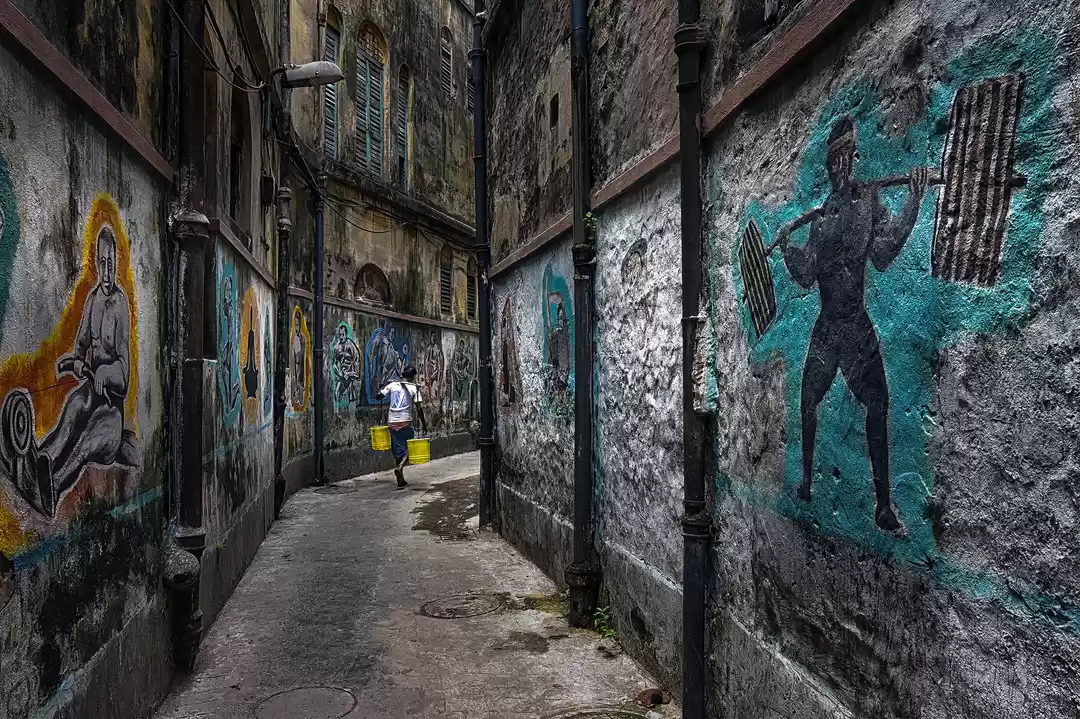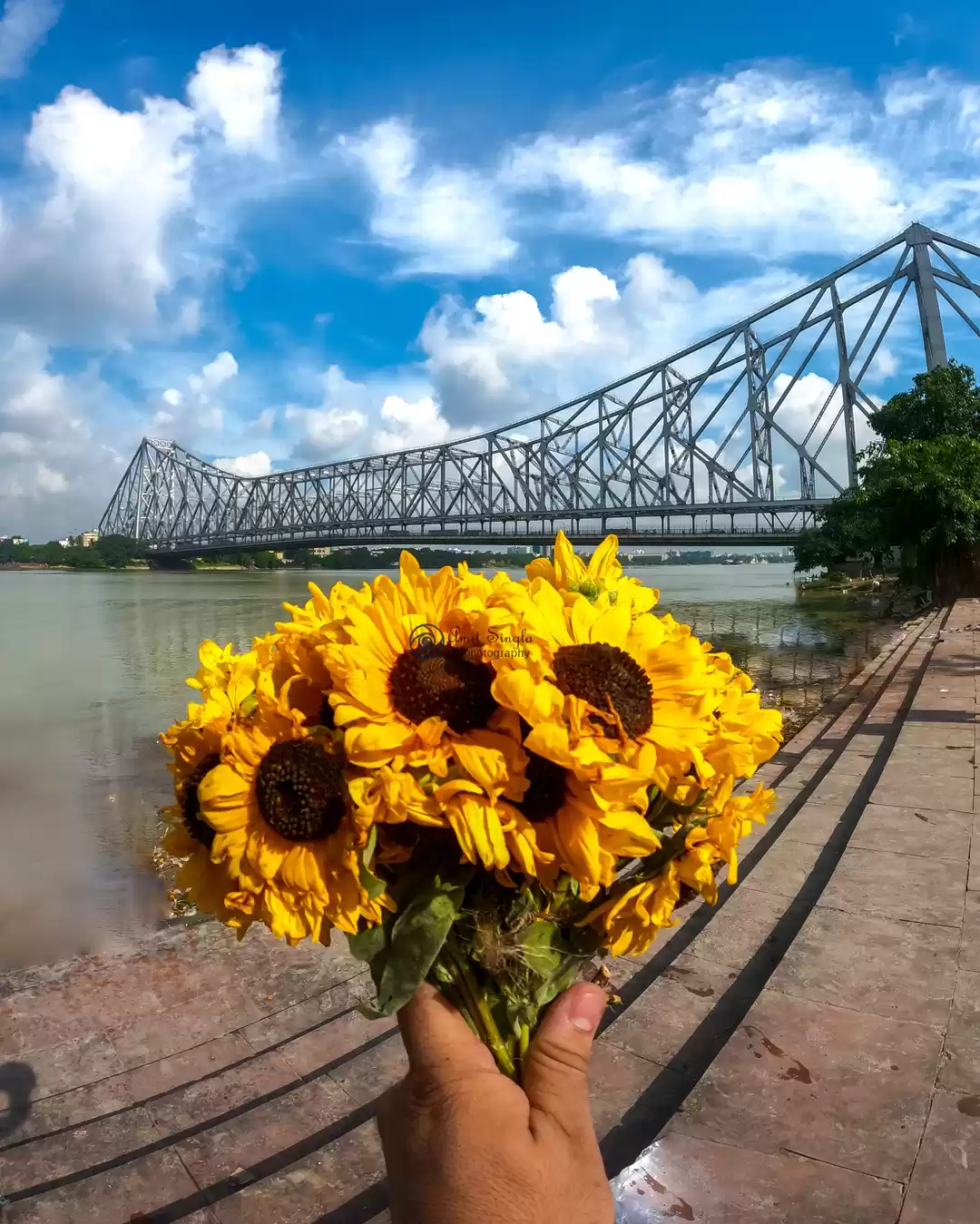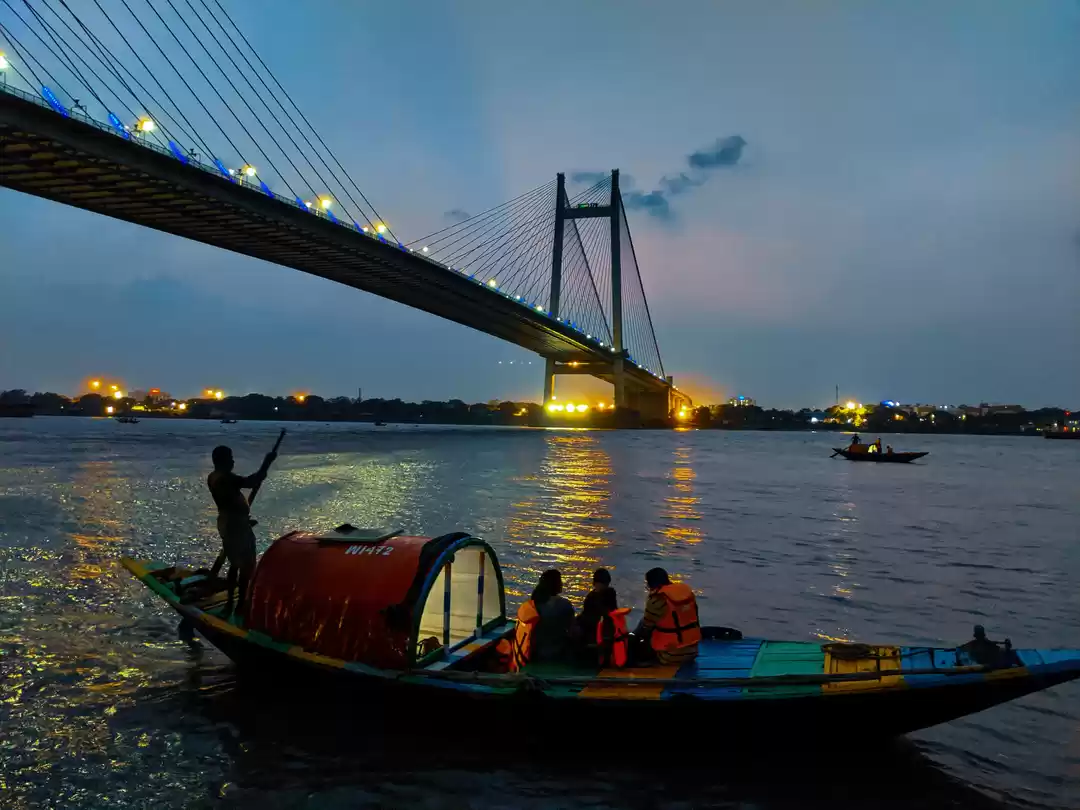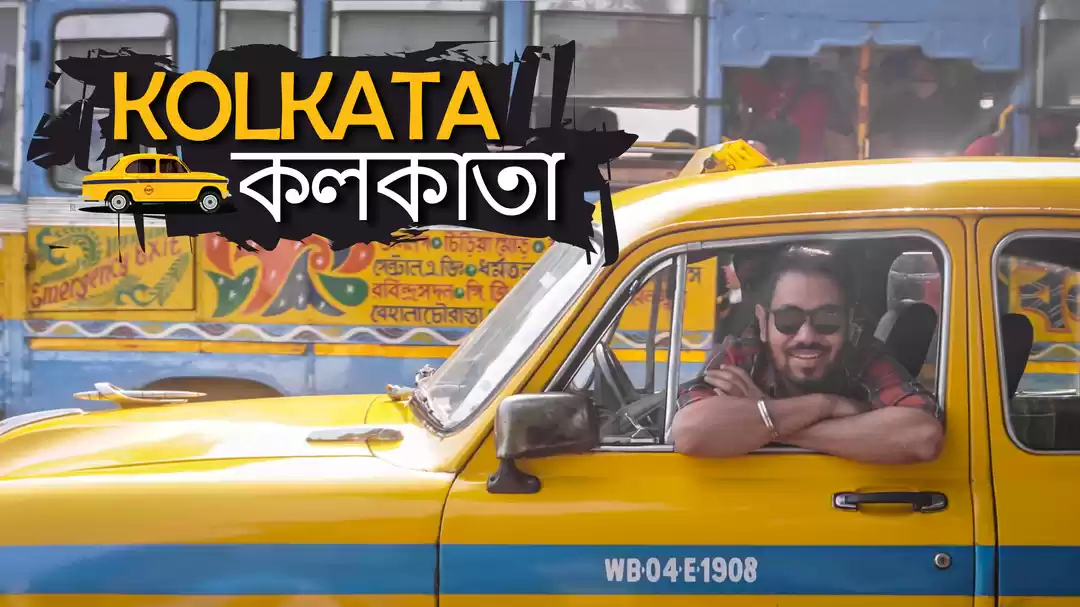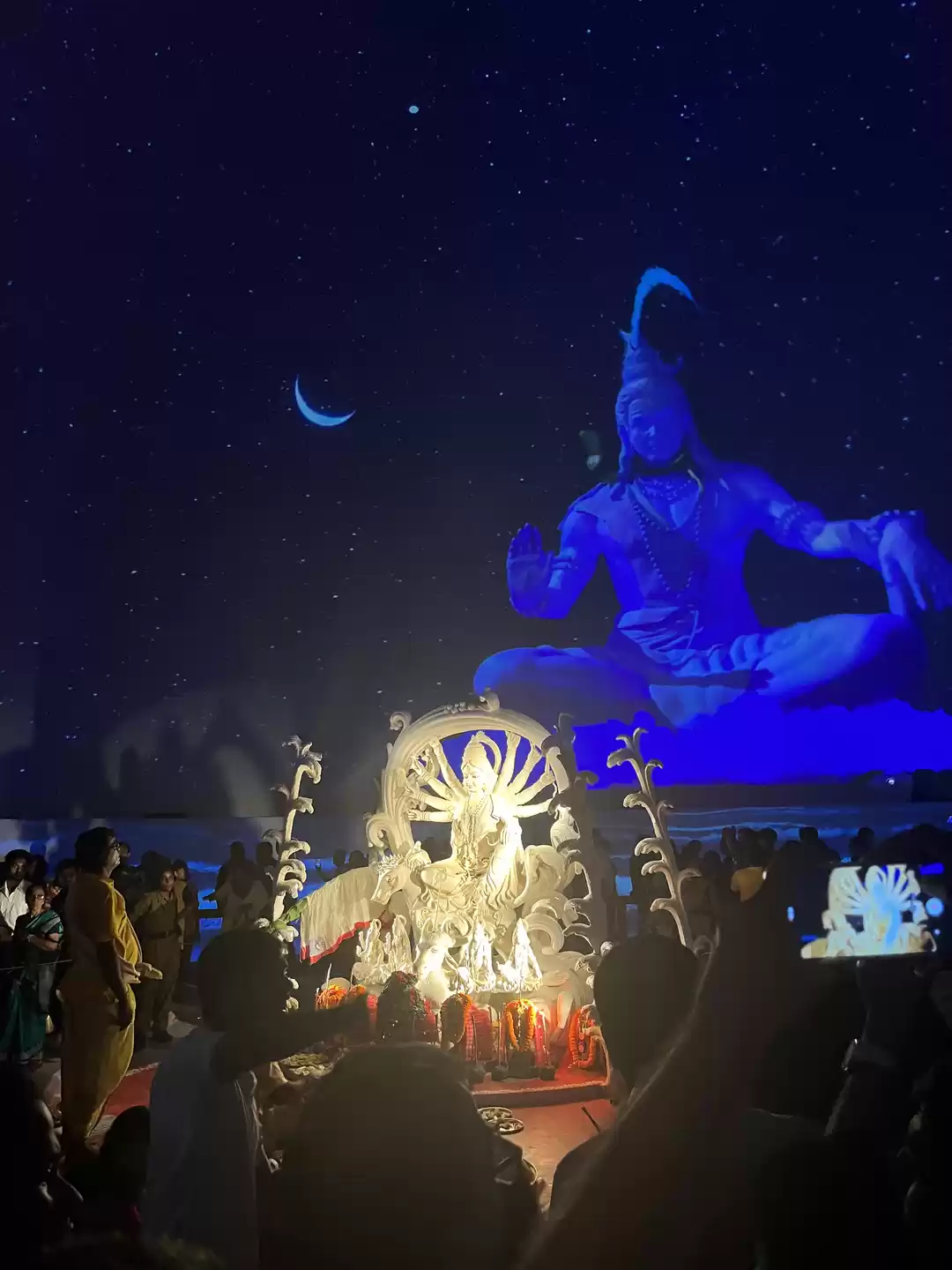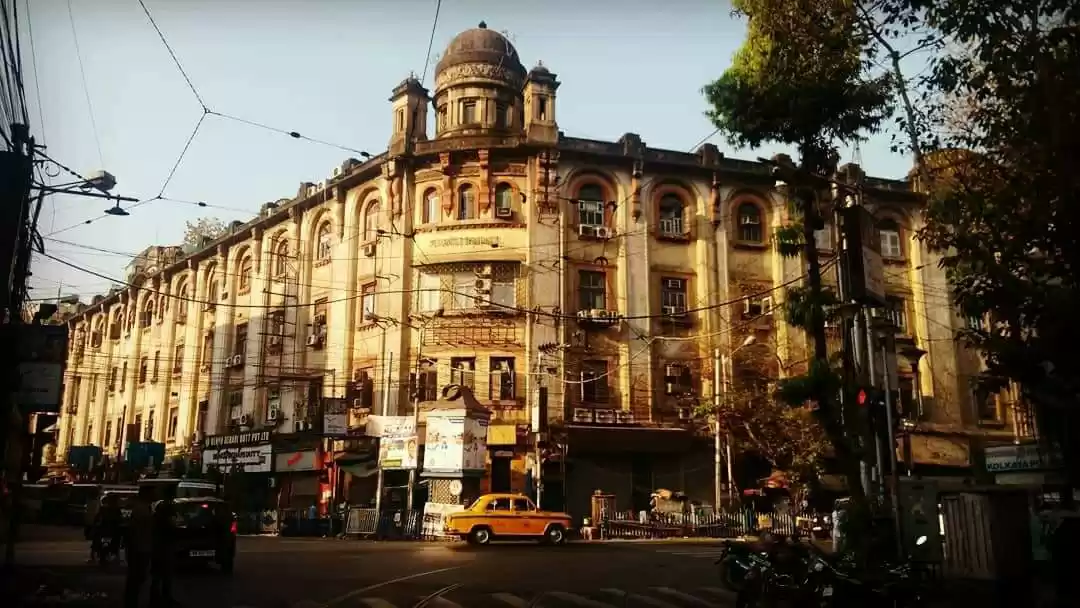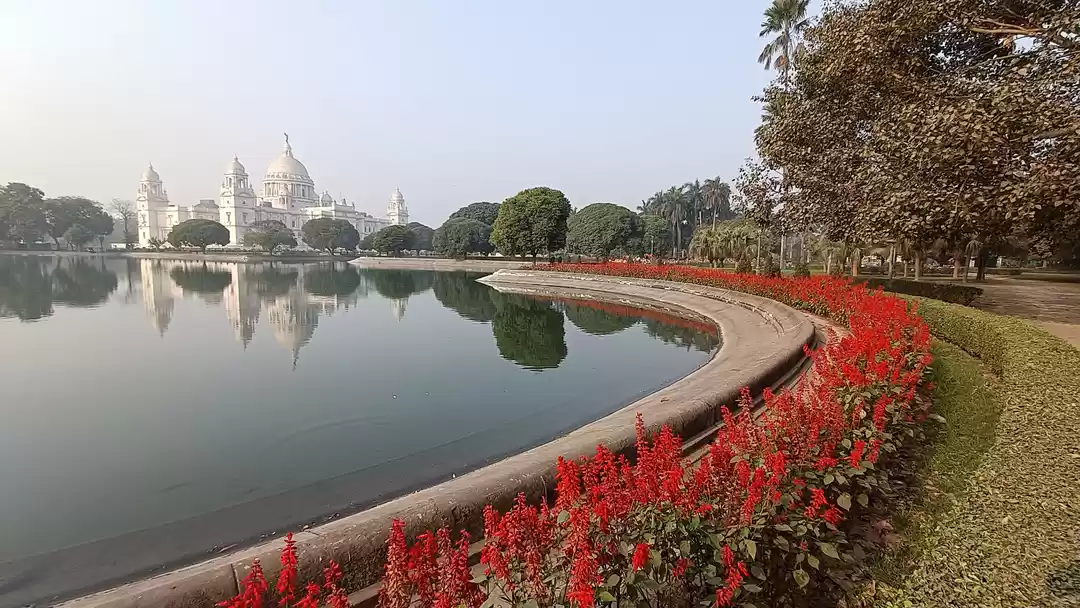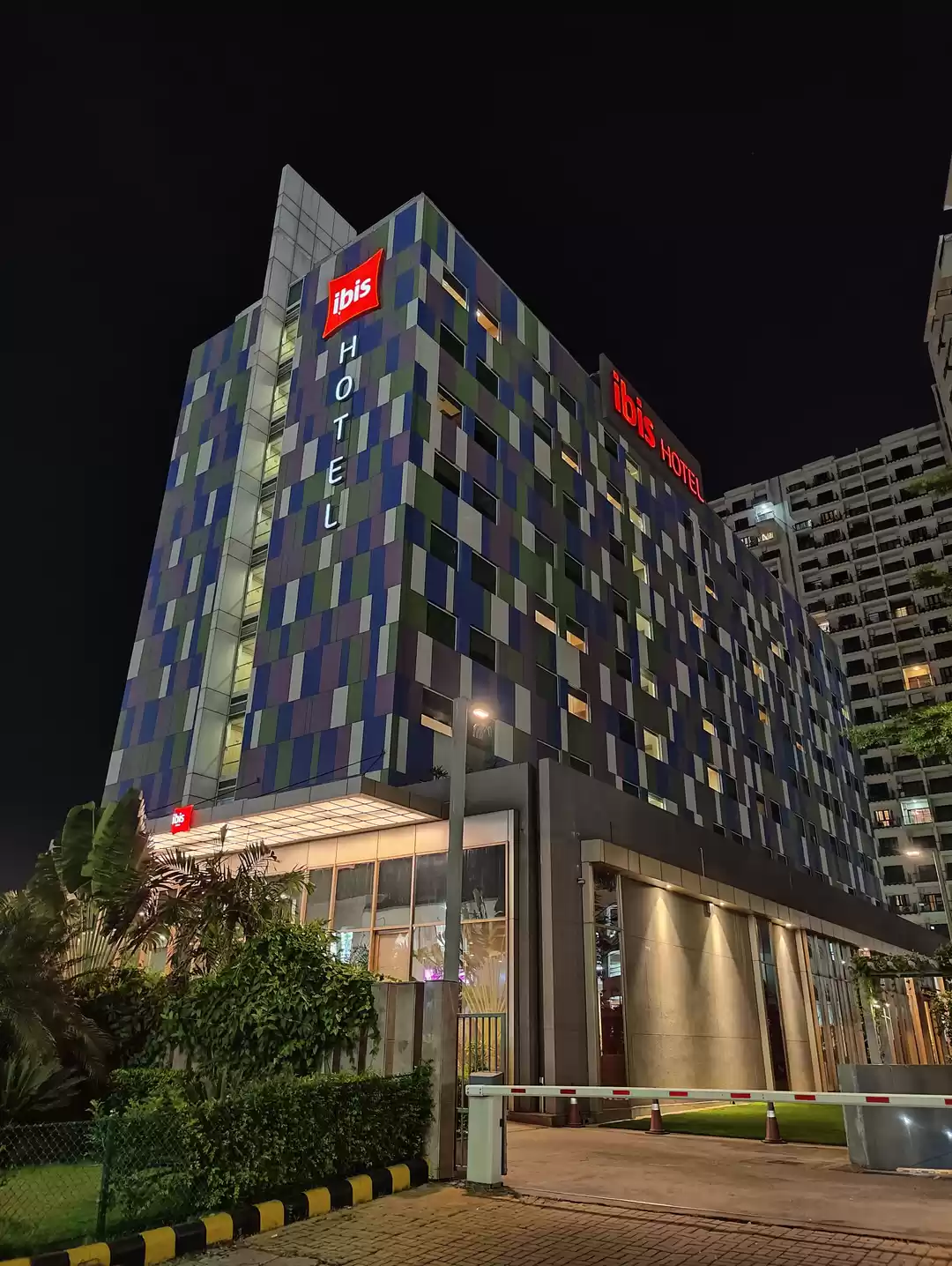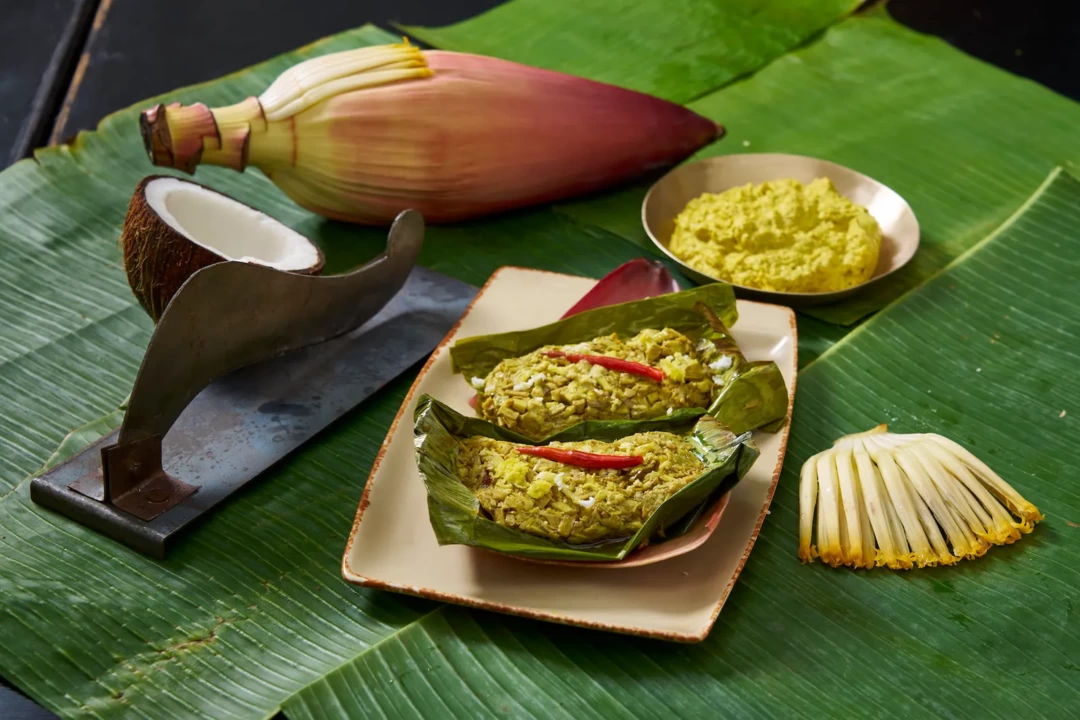The autumnal breeze carries a discernible whiff of shiuli flowers and just like that, the impatient wait for Durga Puja has drawn to a close. Kolkata stands ready, bedecked like a bride and swathed in countless twinkling lights. Hoardings and banners with Ma Durga's face plastered on them, line the street. The city has roused itself to a fever pitch of excitement and tips over into the carnivalesque in spirit.
In a few days, gleaming idols of the 10-armed goddess Durga and her entourage will be brought to the many ornate pandals that dominate the city. There she will stay for five days and witness the myriad range of emotions that play out during this festival–adoration, devotion, laughter, small spats, coy glances at simmering adolescent crushes, awe and tears.
The idols themselves are curiously different even though they are of the same deity with a trident piercing fatally through the chest of the symbolic demon, Mahishasur. In some idols, the goddess' face is benevolent, in some, her eyes are ablaze with fury and in others, her face is calm with a kind of serenity that can only be associated with the divine.
Most of these idols have been crafted painstakingly by hand, amidst five acres of narrow, muddy lanes crowded with tiny, dingy workshops which are a far cry from the stylised pandals which stand resplendent in lights.
In Kumartuli, 450 workshops full of artisans and clay idols jostle for space. The idols that are the subject of such veneration during the festival are created by sculptors here. The God-makers of Kumartuli have been around for 300 years and are still here, creating art under dim bulbs so that Kolkata may have its festival of joy.
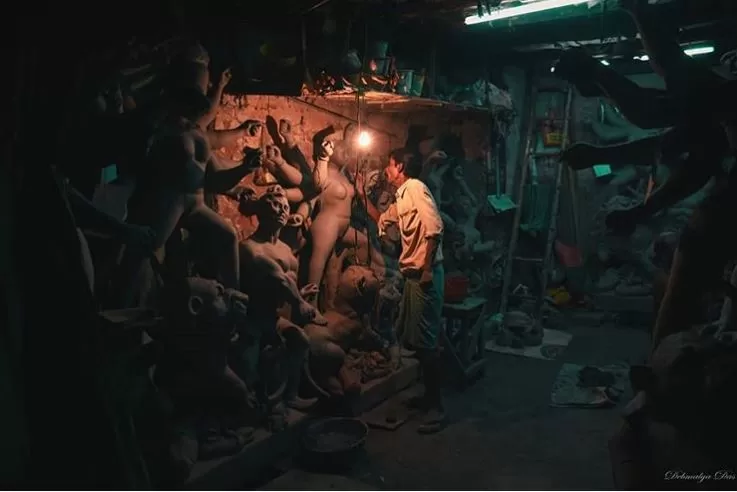
The area has its roots in the days of the British imperial rule, close to the ghats of the river Hooghly in North Kolkata. Districts were allotted to workers and named according to their profession and thus Kumartuli was christened Coomartolly or the potters' quarters. The sculptors here initially started making pots, vessels and other items needed in daily life.
In 1757, Lord Clive persuaded Babu Nabakrisha Deb from Sovabazar to celebrate Durga Puja on a grand scale so he could watch some of Bengal's culture unfold before his eyes. Clive attended and made offerings to the goddess on the occasion. The concept spread like wildfire and soon the moneyed zamindar class of the city started hosting their own Durga Pujas with pomp and splendour, each trying to outdo the other in grandeur. The demand for idols picked up and the sculptors of Kumartuli stepped in to fill the need.

Back in those days, Brahmins held the monopoly over knowledge of religious texts and the non-Brahmin sculptors had ample talent but no idea as to the appearance of the Gods. To feed the gaps in their imagination, Mahishasur was given a sinewy look based on the Greek Gods they spotted on colonial buildings. The Goddess and her children were sculpted according to the Bengali form of beauty with large eyes, heart-shaped faces, a full mouth and long black hair.
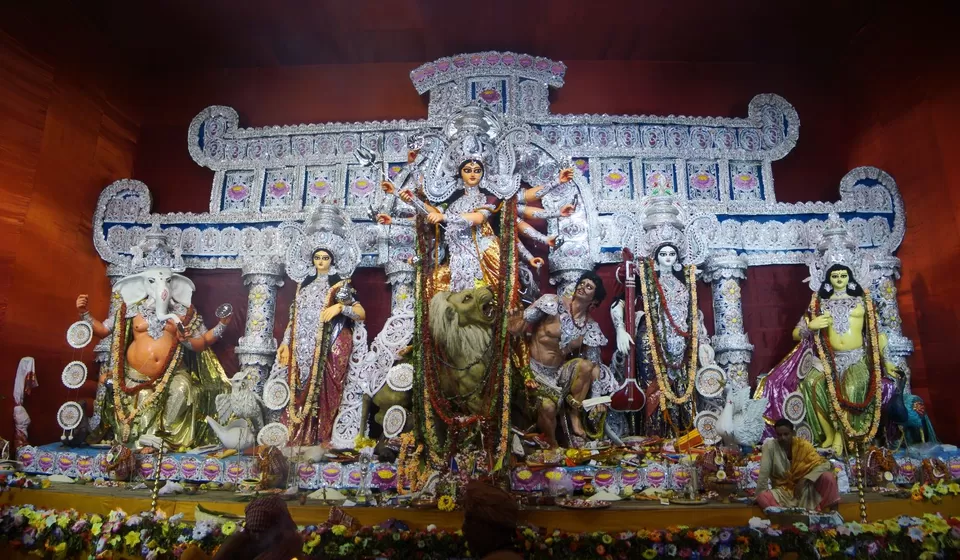
Interestingly, since the sculptors had never seen a lion so they cast the beast in the form of a horse albeit with sharp, large teeth to make it look ferocious. Even today, the lion for Raja Nabakrishna Deb’s pujo is still styled like a horse.
The potters who were commissioned with the task of creating the idols would normally be invited to stay in the thakurbaris until the completion of the idol. However, the tide of time had swept away the wealth and finery of the zamindars and the noveau intellectual middle-class Bengalis came to the fore to organise Sarbojanin Durgostav (Puja by the commoners – for the commoners). Pujo was brought out from private mansions and onto the streets so that all could celebrate Ma Durga. Presently, with makeshift pandals dotting the whole city, sculptors in Kumartuli work day and night to craft masterpieces and adorn pandals.

As tradition dictates, holy mud is taken from the riverbed of the Ganga is taken to create the Goddess' corporeal form. The clay must then be mixed with soil taken from a brothel. This essential ingredient is necessary if you do not wish to invoke the wrath of the Goddess upon you. Soil from prostitutes, called vaishya mati, must be begged for even if the request is refused. Earlier a priest would go outside a prostitute's house and chant verses while receiving the mud. However, with time, the artisans go to these houses and beg for soil themselves.
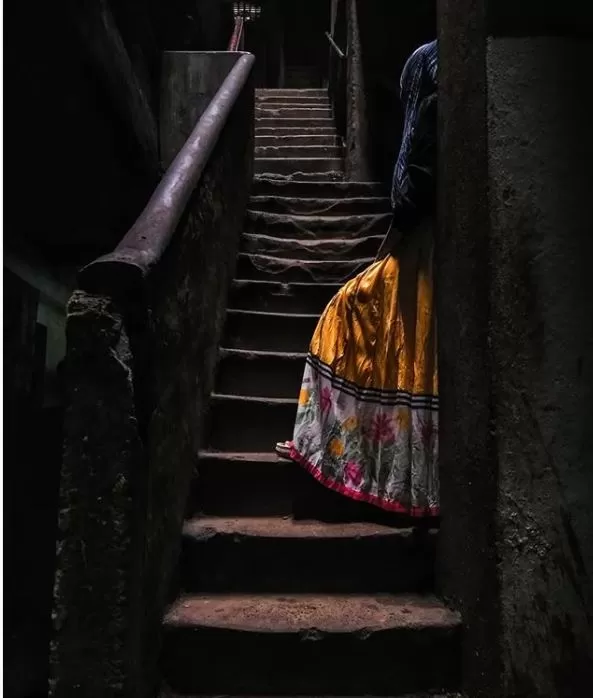
There are several reasons attributed to this tradition but it remains uncertain as to which one gave rise to this ritual. Ma Durga is emblematic of both maternal essence and feminine power which is glorified and worshipped during the festival. The state of sex workers in the country is dismal; they are abhorred, insulted and treated with contempt.
It is believed that Mahishasur, enamoured by Durga's beauty, attempted lurid advances towards her. Enraged by this slight on her dignity, the Goddess destroyed Mahishasur who looked down on women and treated them as objects of little significance. Thus, by going to the threshold of a prostitute's house to beg for mud, the ritual respects sex workers, women who are otherwise humiliated by society.
It is also believed that the soil outside a prostitute's house is purest because all those who enter it leave their virtue and purity behind on the doorstep. The purity seeps into the mud and thus, the mud is considered pure. The ritual is also believed to purge the prostitutes of sin. When they hand over the soil for something as sacred as idol-making, the sex workers get purged of their lifetime of sins.
However, the most rational reason for the ceremony can be explained by how the festival does not discriminate. All people, irrespective of caste and creed, are invited into pandals to celebrate the goddess. Meals are eaten together and there is an atmosphere of inclusiveness and heartfelt warmth.
Work starts here months before the big festival. One artisan mixes clay while another creates the structure of the idol with bamboo and dried straw. The frame is coated with soft clay and smoothed to form features and limbs. The structure is then sun-dried and cracks that appear on the surface are gently ironed out with more clay.

The form is slathered with a coat of white paint which is dried and then flesh colours such as rosy tints, pearl or even golden yellow are applied. Fingers dexterously paint the form and attire it in expensive brocade saris and gleaming jewels. The eyes of the idol are left for last. On the auspicious day of Mahalaya, the power of the goddess is invoked by steady fingers painting the eyes on. This delicate task requiring the utmost concentration is known as chokkhudaan or bestowing of the eyes.
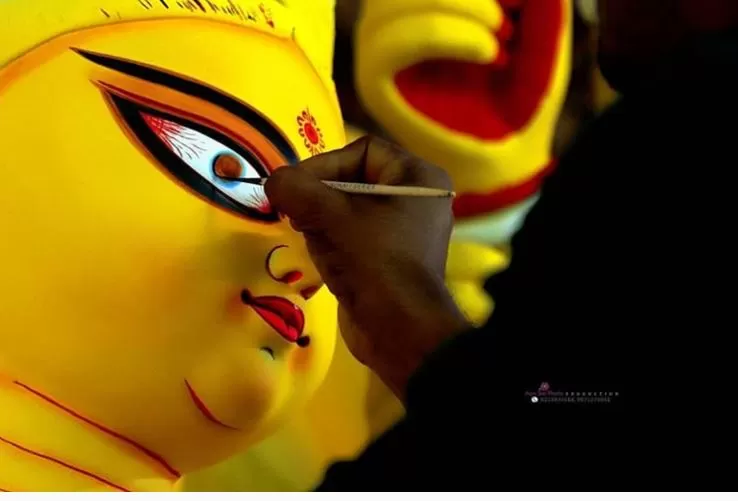
The craftsmen live, eat, sleep and work in the same space. Cramped quarters with several clay forms of roaring lions, curly-haired and sinewy demons, buffalo heads and the pantheon of the Gods. With a set deadline and too much to do, there is little time for small talk with inquisitive tourists who've come to watch art being created in front of their eyes.
Some irate artists wave off visitors especially since they blunder around in the tiny space, sometimes damaging idols. The idol-makers cook meals outside and eat in the quarters cross-legged. Some have a small earthen cup of cha while they work, one puffs on a bidi while inspecting an idol closely, there is an air of easy familiarity between the artists and his imposing subject.

For all the effort and passion these artisans pour into their work, they are scantily rewarded. It is no secret that pujo nowadays is being vastly capitalised. Vast amounts of money are spent into creating spell-binding pandals but when it comes to the idols, community organisers try to drive a hard bargain. Even if the sculptors set a high price for the idols, there are times when the idols remain unsold even as the festive season rounds the corner. As a result, they have to lower prices just to make a sale.
The legacy of these sculptors is incredible. Thriving for over 300 years, the tradition of idol making is handed down generations. However, due to paltry income, the younger generations have moved on to other professions and as such the art is faltering. Communities want newer, more innovative designs for both the pandal and idols and these projects are being handed over to art students fresh out of college.

This art is dying even as those with a love for their craft, hold on fiercely. There are veterans of this art in Kumartuli such as Ramesh Chandra Pal and the ageing Samir Pal who have held on to their legacy despite insurmountable difficulties.

The area has started getting its due recognition but it may be too late. These pieces of art adorn not only pandals in India but also places like Europe, Australia, Africa and America. Bengali communities settled abroad specially order the traditional idols as they yearn for the colourful festivities back home.
After months of hard work, the goddess is cast in her full glory. The idol is carried off with mirth and shouts of joy to be stationed inside ornate pandals and their creators are left behind, forgotten.

Have you been to Kumartuli? Tell us about your experience in the comments below!
Get travel inspiration from us daily! Save and send a message at 9599147110 on Whatsapp to start.





